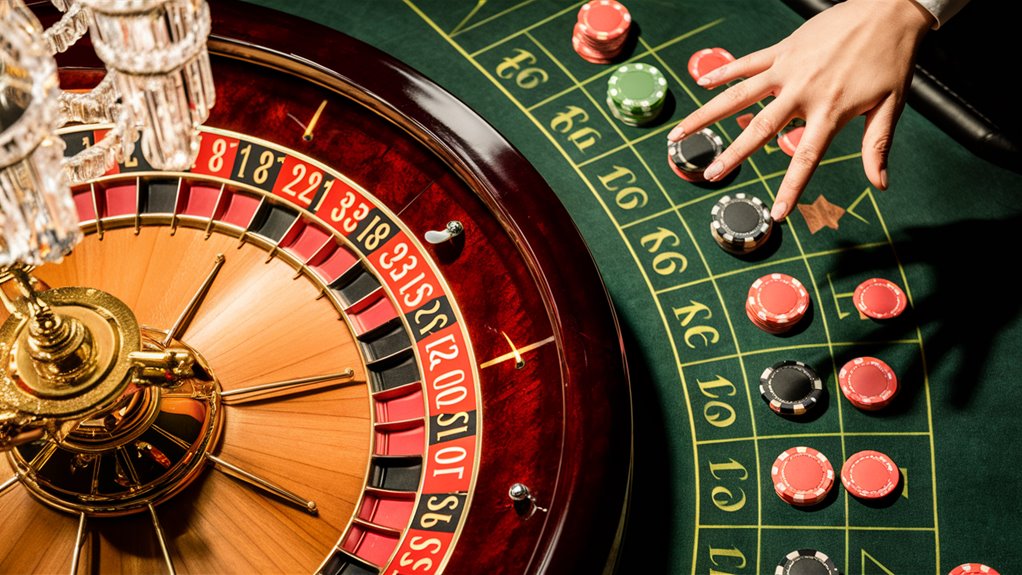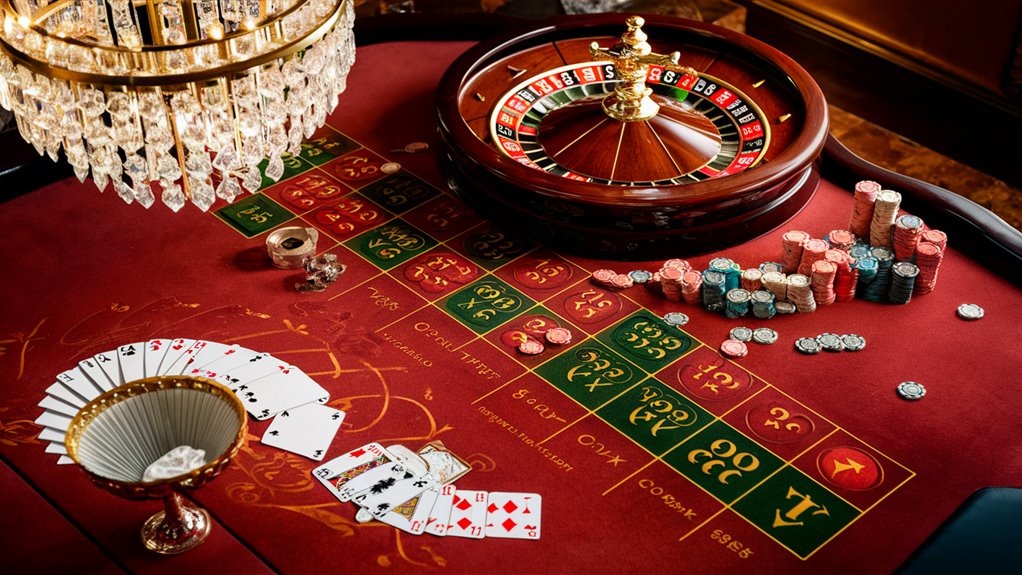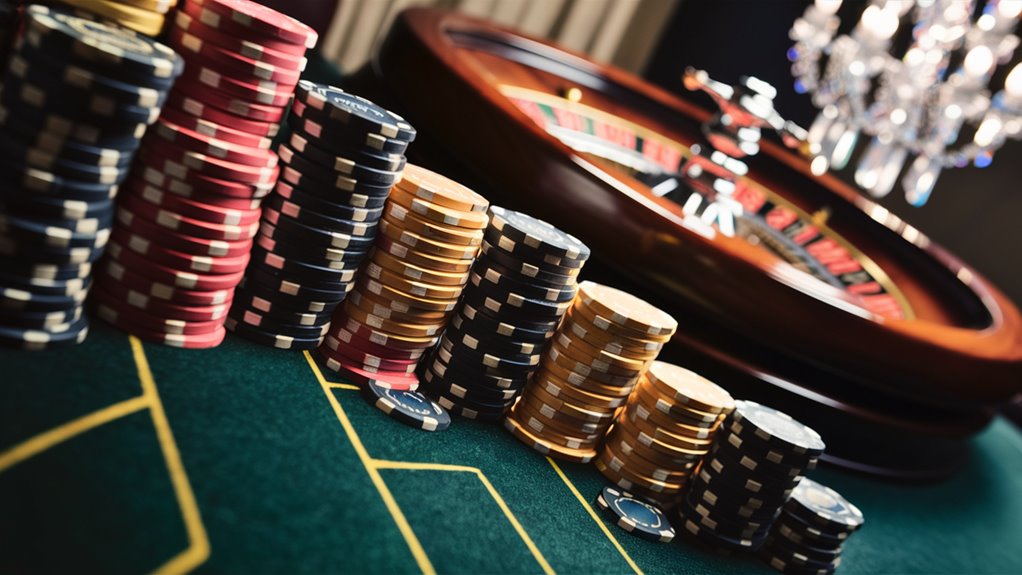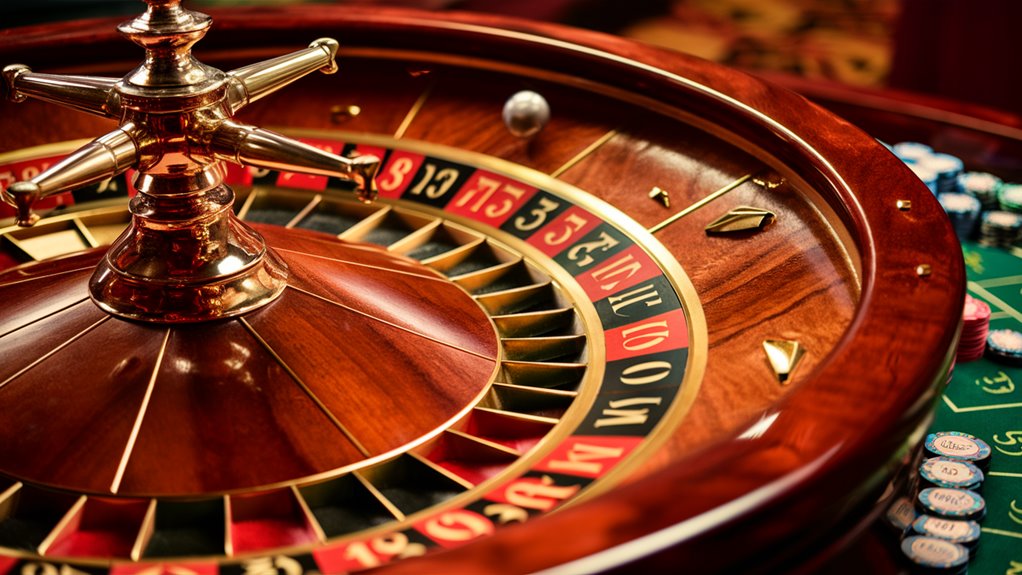How Casino Games Work: The Math You Need to Know

Key Math Ideas in Casino Games
Casino games are built on exact math that sets house edges from 0.5% to 40%. Blackjack has the lowest edge if you use the right plays. It draws players who think well.
How Random Numbers and Odds Work
Slot machines use complex Random Number Generators (RNGs) to make new combos every tick, giving fair results. The American roulette wheel has a 5.26% house edge, showing how the game’s math makes the casino win more. 먹튀검증 공식 추천 확인하기
Games of Skill and Chance
Poker mixes skill and luck, demanding good betting tactics and chance skills. Craps gives many ways to win, with 36 dice rolls creating a big web of bets and odds.
The Math Casinos Use
These complex odds and pay setups build the casino’s edge, bringing in money in the long run while making games exciting with fair risk and win chances. Knowing these basics helps create smart game plans and see how casinos keep the upper hand.
Basics of House Edge
What is Casino House Edge?
What’s House Edge?
The house edge means the way casinos make sure they make money. This edge shows how the odds of paying out are lower than the real odds, noted as a bet’s percent.
House Edge in Action
American roulette shows how house edge works. Betting on one number pays 35 to 1. But, with 38 possible results, real odds are 37 to 1. This gap leads to a 5.26% house edge, giving the casino sure profit over time.
House Edge in Different Games
Each game’s edge varies:
- Blackjack: As low as 0.5% with the right moves
- Slot machines: Between 2% and 15%
- Keno: Up to 20-40%
What It Means for Players
A 5% house edge means losing $5 per $100 bet in the long run. Knowing these rates helps you manage your money well.
How Slot RNGs Work
Slot Machine RNGs: Core Tech
Main Tech Behind Modern Slots
Random Number Generators (RNGs) are the brain of slots, making unique number patterns fast. These systems make sure each spin’s outcome is a shot in the dark, no matter if the slot has been played or not.
Details of RNG Tech
The random number making uses a seed number with a math equation to set where symbols land. Hitting the spin button uses that tiny moment’s number set to fix where the reels end up. Every spin is a new event, with no memory of past spins or set pay cycles.
Virtual Reel and Symbol Setup
Virtual reel tech changes how RNG numbers match to reel spots. Unlike old slot machines, virtual setting allows for odds to be set for each spot. This is why jackpot symbols might pop up more at the start but not much at the end. The set odds way shows why lining up three of the same symbols is harder than it looks.
Blackjack Smart Play
The Best Blackjack Moves

Basic blackjack strategy cuts the house edge to about 0.5% if you do it perfectly. This plan tells you when to hit, stand, double down, or split based on your and the dealer’s cards.
Strategy Bits to Know
Good blackjack playing looks at three key hand types:
- Hard totals (no ace or ace as 1)
- Soft totals (ace as 11)
- Pairs (same cards)
Playing Hard Totals
For hard totals 12-16, follow these tips:
- Hit if dealer shows 7 or higher
- Stand if dealer shows 2-6
- Look for double down chances with 9-11 against weak dealer cards
Soft Hand Moves
Playing soft hands needs careful thought:
- Double down with soft 13-18 against weak dealer cards (3-6)
- Hit soft 17 or less against strong dealer cards
- Stand on soft 19 or more
When to Split Pairs
Smart pair splitting lifts your win chances:
- Always split Aces and 8s
- Never split 5s or 10s
- Split other pairs based on dealer card strength
Seeing the Patterns
Notice these key play patterns:
- Go strong against dealer high cards (7-Ace)
- Use dealer low cards (2-6) to go for bigger bets
- Change your play based on good card counts when you can
Poker Odds
Top Poker Chances Guide
Basic Poker Chances
Poker chance basics turn normal players into smart betters by giving solid numbers to think about for each hand. Math in poker needs knowing certain situations to play your best at every step.
Main Odds in Poker
Poker chance basics focus on three main numbers:
- Outs: Cards that make your hand better
- Pot odds: How much you can win compared to what you need to put in
- Equity: Your chance to win the hand in percent
Must-Know Poker Chances
With a normal 52-card deck, some odds always stay the same:
- Pocket aces chance: 0.45% (every 221 hands)
- Getting a set on the flop: 11.8% with any pair
- Completing a flush: 34.97% from flop to river
- Making a straight: 31.5% chance (8 outs)
How Odds Guide Betting
Knowing drawing hand odds helps you decide when to:
- Call right
- Raise to win more
- Fold when needed
Getting these math facts lets players judge expected value and choose bets to make more money over time at the poker table.
How Roulette Bets Work
All About Roulette Bet Systems
Roulette Bets: What You Need to Know
Roulette bet systems are plans to deal with the built-in house edge of 2.7% (European roulette) or 5.26% (American roulette). These plans have drawn in players for years, each with special ups and downs.
The Martingale System
The Martingale system is well-known, using a betting plan where you double your bet after each loss. While it seems like a sure thing – planning to get back all losses plus a bit more upon a win – two big things stop it:
- Bet limits stop you from always doubling
- Chances of running out of money if you lose a lot
Other Bet Plans
The D’Alembert System
The D’Alembert system is less risky than the Martingale, using a simple addition plan:
- Add one unit after losses
- Take away one unit after wins
The Fibonacci System
The Fibonacci betting system uses a well-known number pattern (1,1,2,3,5,8…) for betting. Even with its clever look and natural numbers, this plan can’t beat the basic house edge.
The Labouchere System
The Labouchere betting method uses a flexible number sequence for bet sizes. It’s more adaptable than other plans, but it can’t change the fixed house edge that comes with each spin.
Limits of Betting Systems
All roulette betting plans face the same truth: they can’t beat the math edge built into the game. Each spin is its own event, not changed by past spins or betting ways, making long-term wins impossible by just following a system.
Dice Odds in Craps
Craps Dice Odds: The Basics
Craps Basics
The core math of craps uses the 36 ways two six-sided dice can come up. These combos set certain odds ratios for different bets. To find the basic odds, divide good outcomes by all 36 possible ones.
How Pass Line Works
The Pass Line bet odds consider several cases. In the first roll, you win if:
- 7 or 11: 8 good combos
- 2, 3, or 12: 4 bad combos
- Point numbers (4,5,6,8,9,10): Need the same number again before a 7
More Complex Odds
When a point is set, the odds change: High-Stakes Gamblers
- A 6 before a 7: 5 good combos, 6 for a 7
- Hard 8 (two 4s): 1 good out of 36
- Any 8: 5 good combos
Casino Edge In Bets
The house advantage is in these odds, shown in different payouts.
The math link StreamLazy


